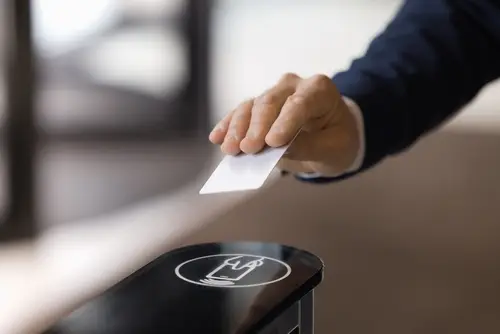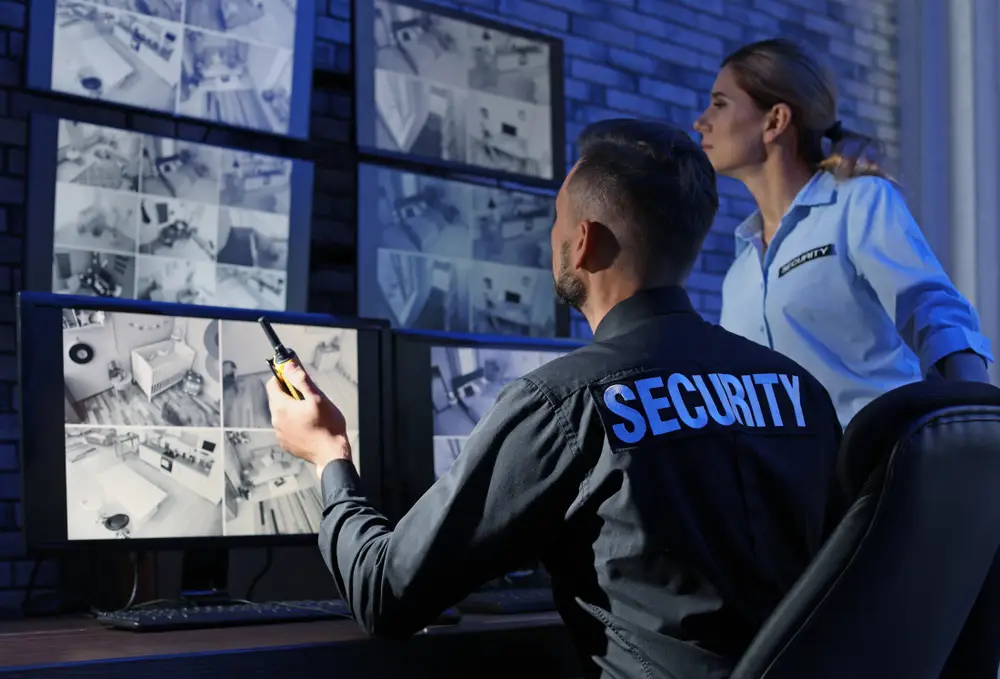Table of Contents
In a world where safety can sometimes feel uncertain, the security of your home is invaluable. Imagine coming home to a place that not only keeps out the elements but also protects you from potential threats. Home security goes beyond alarms and locks—it’s about creating an environment where you and your loved ones feel truly safe.
This comprehensive guide walks you through practical, easy-to-implement steps to assess your home’s vulnerabilities, bolster physical security, integrate modern tech, and foster a safety-conscious community around you. Whether you’re a homeowner, renter, or family member, these strategies will help you build a secure and peaceful living space.
1. Home Security Assessment: Identify and Address Vulnerabilities
Securing your home starts with a clear understanding of its weaknesses. Imagine your home as a fortress; the stronger the defenses, the safer you’ll feel. Conduct a thorough security assessment by examining your property’s layout, entrances, and surroundings.
Key Areas to Inspect:
- Entry Points: Doors, windows, garages, and any other potential openings should be your first focus. Are there doors that lack deadbolts? Windows without locks? These common vulnerabilities are often the easiest points of entry for intruders.
- Weak Spots: Look for anything that could serve as a hiding spot for trespassers, such as overgrown shrubs or dimly lit areas.
- Existing Security Measures: Evaluate the locks, lighting, and fencing you already have in place. Are they robust enough? A home with a strong security foundation will often deter opportunistic criminals from targeting it.
Practical Tip: Walk around your property as if you were an intruder. Pay attention to places that seem secluded or dark, and consider ways to address these areas. This perspective can often reveal vulnerabilities you may not notice otherwise.
2. Strengthening Physical Security: Build a Solid Defense
Physical security measures form the backbone of a secure home. These include upgrades to doors, windows, lighting, and landscaping, each of which can play a role in keeping potential intruders at bay.
Door Security Enhancements:
- Solid Doors: Opt for solid core doors at all main entrances. These doors are far more resistant to forced entry than hollow ones.
- Deadbolt Locks: Install high-quality deadbolts on every exterior door. Choose grade 1 or grade 2 deadbolts, which are designed to withstand greater force.
- Door Reinforcement Kits: These kits can significantly strengthen your doors, making it harder for anyone to kick them in.
Window Security Tips:
- Secure Locks: Ensure that each window has a functioning lock. Window locks can deter intruders and keep windows from being opened from the outside.
- Shatterproof Film or Glass: Consider installing shatterproof film or glass on ground-level windows. This additional layer makes it challenging for someone to break through.
- Window Sensors: Attach sensors to windows to alert you if they are opened unexpectedly.
Outdoor Lighting and Landscaping:
- Install Motion-Activated Lights: Lights that turn on with movement can deter criminals by spotlighting their actions.
- Trim Overgrown Shrubs and Bushes: Keep landscaping neat and avoid providing places for intruders to hide.
- Add Gravel Paths Near Windows: The crunching sound of gravel can serve as a natural alert system if someone approaches your home’s exterior.
Pro Tip: Adding a “Beware of Dog” sign, even if you don’t have a pet, can be a strong deterrent. Criminals often avoid homes where they believe dogs may alert homeowners or neighbors.
3. Electronic Security Systems: Integrate Technology for Peace of Mind

Technology can give your home an added layer of protection. Modern security systems offer features that not only deter but also help detect intrusions, monitor activity, and provide real-time updates.
Choosing a Security System:
- Alarm Systems: These are often the first line of defense against break-ins. Many systems come with door and window sensors, loud alarms, and the ability to alert authorities.
- Surveillance Cameras: Cameras provide both a visual deterrent and a way to monitor activity around your property. Consider installing cameras with night vision, cloud storage, and high-resolution recording for the best coverage.
- Smart Home Integration: Modern systems allow you to control alarms, cameras, lights, and even locks remotely through a smartphone app. This way, you can keep tabs on your home from anywhere.
Popular Security Features:
- Video Doorbells: These allow you to see and speak to visitors without opening the door, adding a layer of safety.
- Motion Detectors: Motion sensors, especially when paired with security lighting, can alert you to unexpected activity.
- Access Control Systems: Some security systems let you control who can enter the home by using keypads, swipe cards, or even fingerprint recognition.
Real-Life Scenario: A family on vacation used their smart home security system to monitor their property from thousands of miles away. When their door sensor was triggered, they received an alert, allowing them to notify local authorities who arrived before any further breach could occur.
4. Personal Safety Habits: Building a Routine of Security

No security system is foolproof without good habits. Incorporate personal safety practices into your daily routine to reinforce the physical and electronic measures you’ve put in place.
Lock Up, Every Time:
- Make it a habit to lock all doors and windows every time you leave the house, even if it’s just for a short trip. Criminals often look for easy opportunities.
Be Mindful of What You Share Online:
- Avoid posting real-time updates of your location on social media. Broadcasting that you’re away can be an invitation for burglars.
Establish a Nighttime Routine:
- Create a checklist for securing your home at night, including locking doors, closing curtains, and setting alarms.
Emergency Preparedness:
- Prepare for emergencies by establishing an action plan. Know the exits, create an emergency contact list, and designate a safe spot to gather in case of a fire or break-in.
5. Neighborhood Watch and Community Safety: The Power of a Connected Community

One of the best ways to enhance your home’s security is to engage with your neighbors. Neighborhood watch programs and community policing create a network of people who look out for one another, making it more difficult for crime to take place undetected.
Benefits of Neighborhood Watch Programs:
- Increased Surveillance: Neighbors can report suspicious activity, deterring would-be criminals.
- Shared Knowledge: You’ll have access to information about recent activity, crime trends, or potential threats in the area.
- Stronger Community Bonds: Knowing your neighbors fosters a sense of mutual protection.
How to Get Started:
- Reach out to local law enforcement for resources and guidance.
- Organize meetings to discuss security concerns and establish a plan for watching each other’s properties.
- Encourage everyone to report any suspicious behavior and to maintain open lines of communication.
Example: In a neighborhood with a robust watch program, a resident noticed unfamiliar individuals loitering near a neighbor’s home while they were on vacation. By reporting the situation, the local police were able to intervene, potentially preventing a break-in.
6. Tailored Security for Specific Populations: Addressing Unique Needs

Different family members may have specific safety needs, especially seniors, children, and people with disabilities. Tailoring security measures to accommodate everyone ensures that all residents feel secure and protected.
For Seniors:
- Install Grab Bars and Ramps: These features can make it easier for older adults to navigate their home safely.
- Emergency Alert Devices: Wearable devices that connect to emergency services can provide immediate assistance if needed.
For Families with Children:
- Childproof Locks and Covers: Locking cabinets and using outlet covers can prevent children from accessing dangerous items.
- Secure Pool Areas: Install fencing and locked gates around any water features to prevent accidental drownings.
For Individuals with Disabilities:
- Accessible Security Devices: Ensure alarms, door locks, and communication devices are accessible and easy to use.
- Adaptive Lighting Systems: Install voice-activated lighting or motion-detected lights for easier navigation at night.
7. Cybersecurity for the Home: Securing Your Digital Life

In today’s digital age, online security is as vital as physical security. Cybercriminals can breach home networks to steal sensitive data, gain access to smart devices, or commit identity theft.
Best Practices for Cybersecurity:
- Secure Your Wi-Fi Network: Change the default password on your router, and use a strong, unique password for your Wi-Fi.
- Enable Two-Factor Authentication: Whenever possible, use two-factor authentication to add an extra layer of security to your online accounts.
- Be Cautious of Phishing Attempts: Avoid clicking on suspicious links in emails, especially those from unknown sources.
Protecting Your Smart Devices:
- Regular Updates: Ensure your devices are updated with the latest security patches.
- Use Secure Apps: Only download apps from trusted sources, and review their permissions to avoid giving unnecessary access to your information.
8. Home Security Resources: Where to Find Help and Guidance

There are many resources available to homeowners looking to boost their home security. From government agencies to security companies, the support you need is often just a phone call or click away.
Key Resources to Explore:
- Local Law Enforcement: Most police departments offer home security assessments and can provide advice on community safety initiatives.
- Online Security Communities: Websites like neighborhood forums and security blogs provide tips, reviews, and insights from experts.
- Security Companies: Consult professional security providers to learn about the latest products and get personalized advice on what may work best for your home.
Conclusion: Continuous Vigilance for a Secure Home
Home security isn’t a one-time effort but an ongoing process of vigilance and improvement. By regularly assessing your home’s safety, implementing physical and electronic measures, practicing personal safety habits, and engaging in your community, you can build a well-rounded security plan that adapts to changes over time. Remember, the goal is to create a place where peace of mind comes naturally. With a secure home, you and your loved ones can focus on what truly matters—enjoying each other’s company without worry.
Quick Links
Resources
- Private Security
- Residential Security
- Corporate Events
- Retail & Loss Prevention
- Worksites & Warehouses
- Large Gatherings
- Health Providers & Clinics
- Hotels & Resorts
-
Cage#
8GY18 -
License#
B1900411 -
DUNS#
091352049




